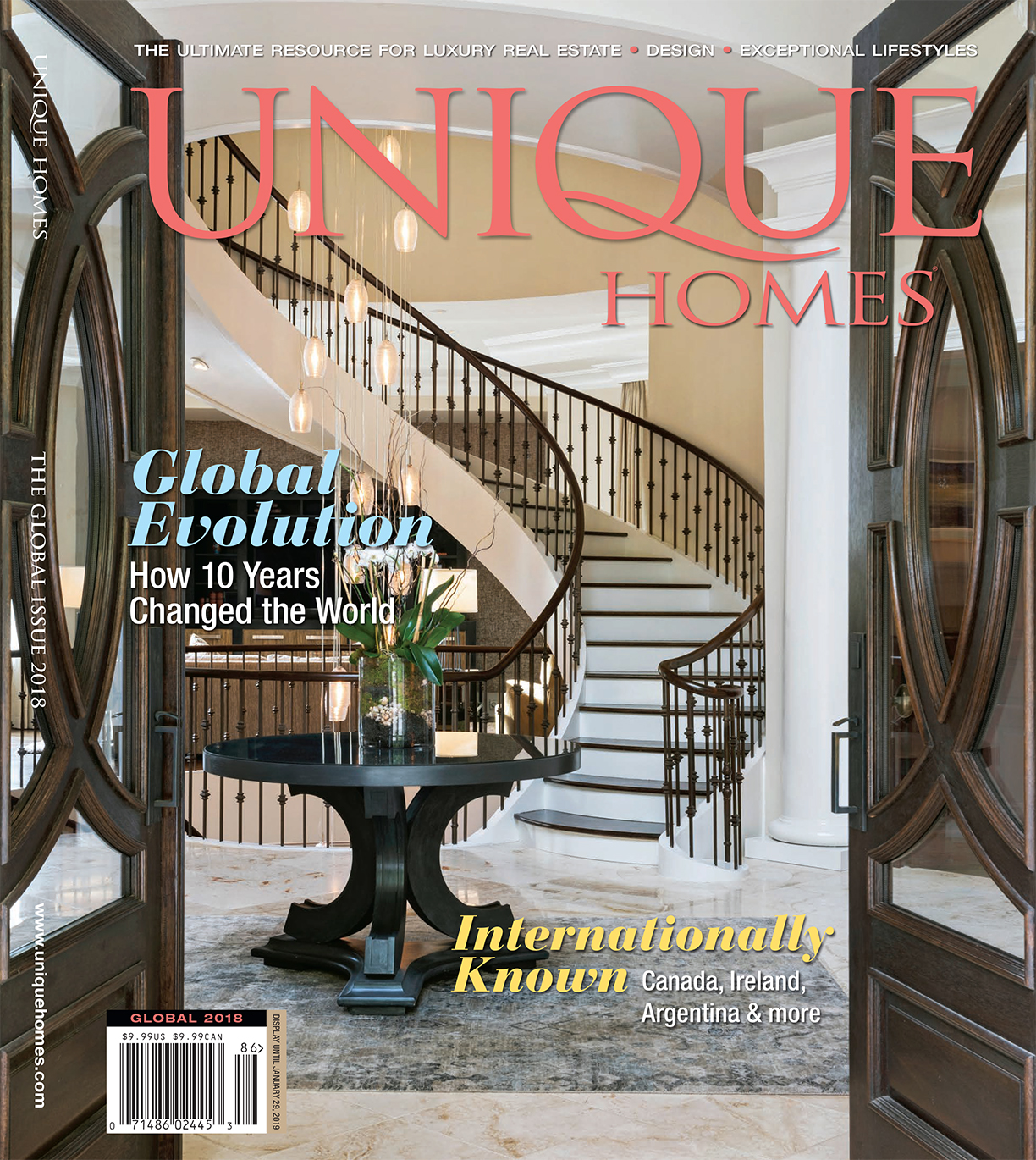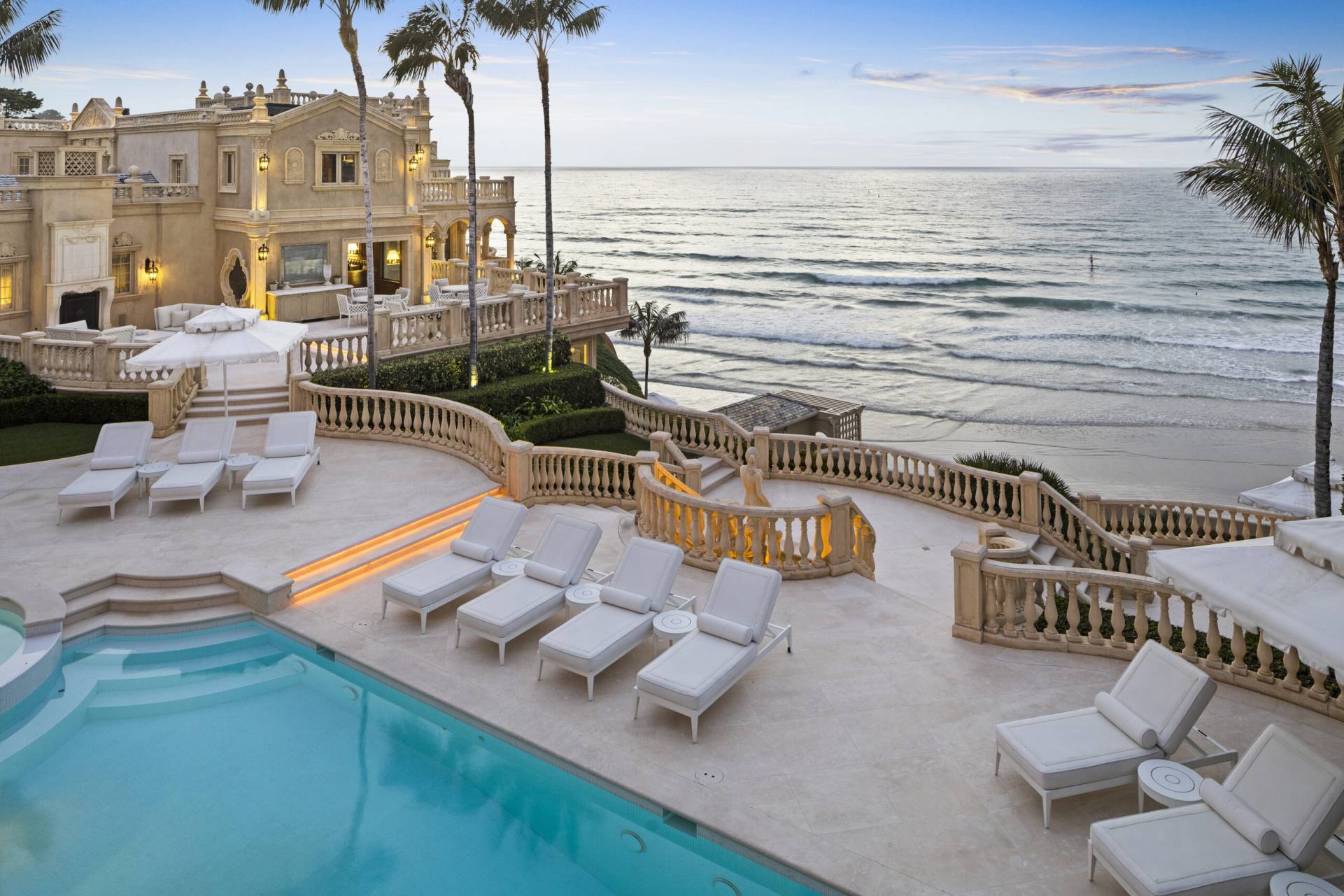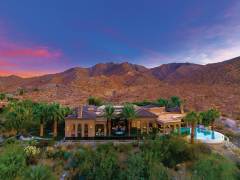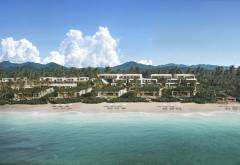Although she has been one of the world’s greatest stars as a singer, comedian and actress, Cher might have had an even more successful career as a real estate developer.
From Florida to California and Hawaii, Cher has had her hand in designing and decorating a number of homes including on the Big Island in Hawaii at the exclusive gated Hualālai Resort where she and her architect-partner, William Long, designed a stunning ocean-view, Bali-style house – a result best described as contemporary meets exotic.
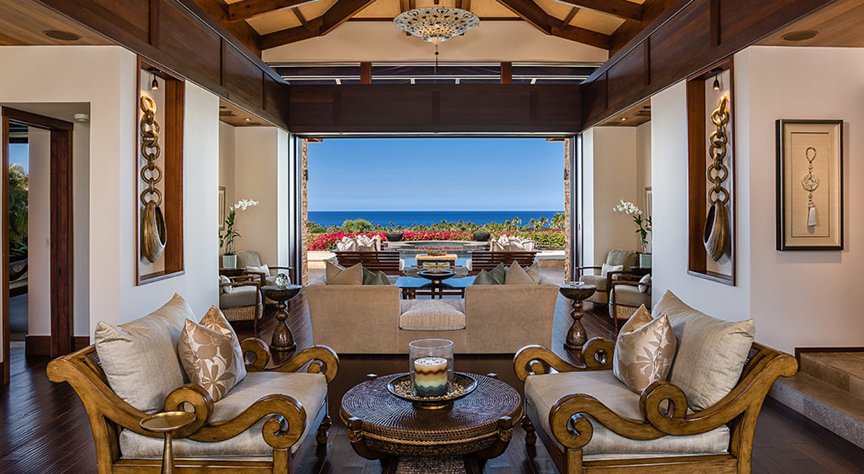
The current owner, billionaire businessman Bob Parsons, who founded GoDaddy in 1997 and the founder of PXG/Parsons Xtreme Golf has put the home on the market fully furnished for $10.955 million.
Since 1970 when Cher and Sonny Bono bought their first serious home, Cher has been fully engaged in managing the decor, first in conjunction with decorator Ron Wilson. She would tell him what she wanted, he would say it was impossible, and she said, “just do it.” He always did and worked with Cher on her next five home acquisitions through 1991. In 1996, she bought a property in Miami Beach when she took over the decorating herself and also launched Sanctuary, her mail order catalog.
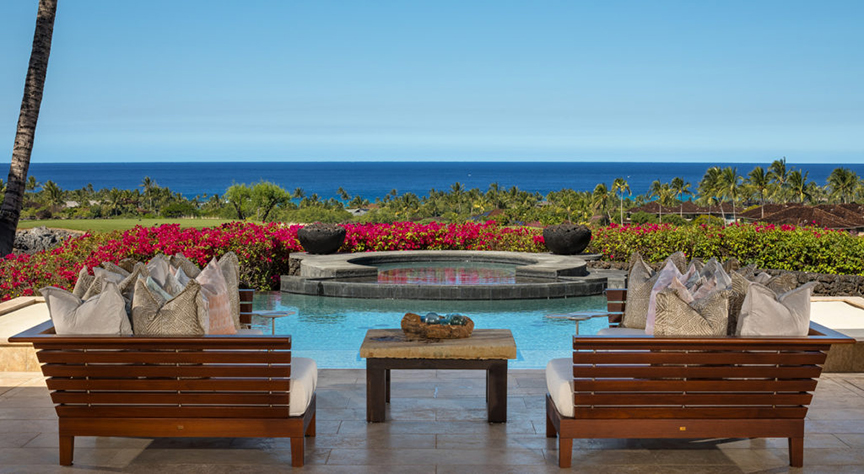
By now, her style was permanently grounded using large pieces and varied textures, simply without clutter. After selling the Miami Beach mansion in 2002 she bought and decorated another grand mansion in Malibu, then advanced from decorating to designing the actual home in Hawaii with the assistance of Mr Long in 2008.
Taking full advantage of Hawaii’s perfect weather and gentle tradewinds, Cher’s design maximized these climate elements by emulating the Balinese open-pod architectural style with great expanses of movable glass walls that create a vanishing threshold for indoor-outdoor living.
Since air conditioning is rarely necessary and overhangs prevent rain showers from coming in, it’s not only refreshing but also a practical approach to year-round living. Spread across just over three quarters of an acre, the 9,446-square-foot house is made up of a series of pods that are arranged with the owner occupying the central pod which contains the main living and dining rooms, kitchen, casual dining on the lānai, and master suite. Guests have separate individual pods at the courtyard entrance so they don’t have to traverse the main living area when coming and going.
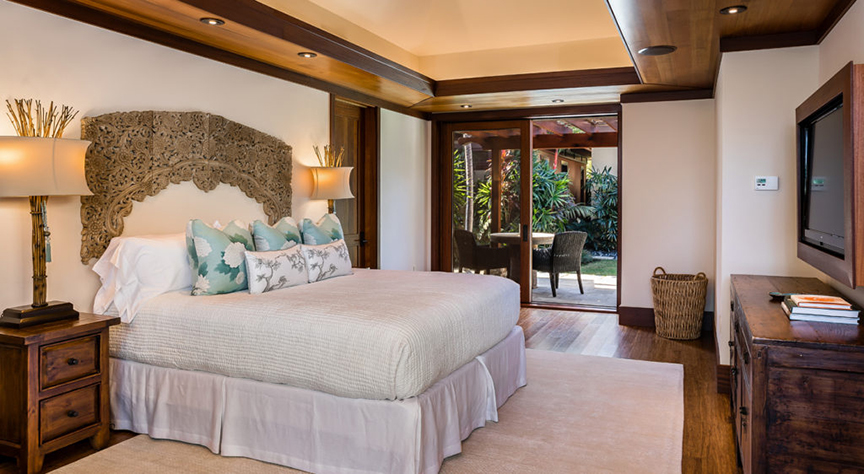
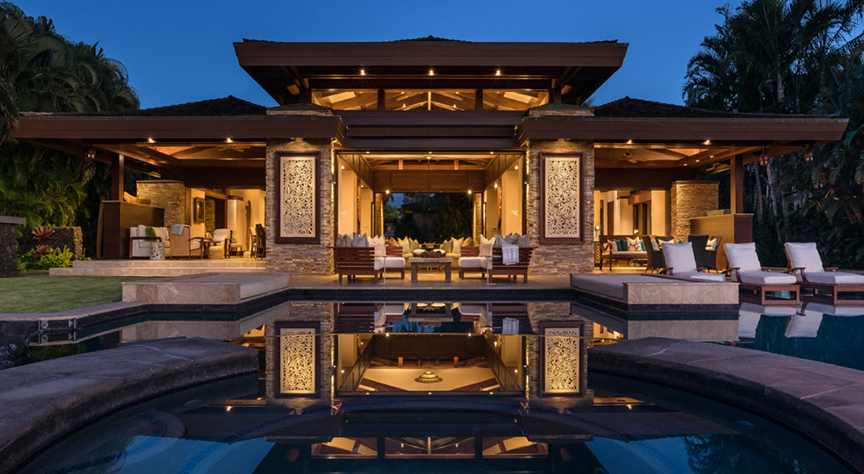
Overall, the home includes six bedrooms, six full and two half baths. Some of the baths open to private gardens for outdoor showering. The master suite faces the ocean, has an office and private deck with wrap-around water feature. The master bath has custom-stone sinks and a free-standing soaking tub open to its own private garden. Outside there is an infinity-edge pool and spa with wide panoramic views of the ocean and the members-only Ke’olu Golf Course. The buyers will also have access to the resort’s shared amenities, which include tennis, golf, a swimming pool, private beach club, six restaurants and access to the Four Seasons Resort Hualālai.
Cher designed and decorated Bali-style house inside the gated Hualālai Resort is now for sale, priced at $10.995 million. The listing agent is Rob Kildow, director of residential sales at Hualālai Realty, Kona-Kohala Coast.
Source: TopTenRealEstateDeals.com
Photos courtesy of Hualālai Realty
At a skyscraper in Times Square recently, real estate developers and philanthropists Douglas and Susanne Durst and The Durst Organization hosted a benefit to support The Everglades Foundation, a nonprofit organization committed to protecting and restoring the Everglades through science, education and advocacy.
The Everglades Foundation CEO Eric Eikenberg and the Dursts were joined by renowned nature photographer Mac Stone, author of the award-winning book Everglades: America’s Wetland. Stone provided the event’s 150 guests — celebrities, politicians and business leaders among them — with a visual journey through the storied ecosystem. Guests were also treated to light fare from chef Claus Meyer (co-founder of Copenhagen’s renowned Noma restaurant), whose Michelin-starred cuisine is inspired by nature.

© Patrick McMullan
The images captured by Mac Stone helped encourage attendees to become involved in the protection of the Everglades, the largest subtropical wilderness in North America and home to 78 threatened or endangered species. Diking, damming and development have shrunk the wetlands to nearly a third of its original size and contributed to toxic algae blooms. Stone suggests diverse perspectives — including water policy, wildlife protection and urban planning — animate any conversation on the Everglades.
“The Everglades may not have the dramatic vistas of treasured national parks like Yellowstone or the Grand Canyon, but is equally deserving of our adoration,” insists Stone. “Although the Everglades lives in Florida, it’s a national treasure — one of the most unique, and imperiled, places in the world,” he says, adding, “We all have a mutual stake in these wetlands, which are part of our natural heritage.”
“Florida is being ravaged by a perennial algae crisis that’s destroying our beaches, fisheries, tourism and real estate industries,” says Eikenberg, who explained to the guests in Manhattan that New York State faces similar algae blooms. “Our two states share so many important cultural and economic connections, so it’s only natural that we should come together in the interest of protecting one of the last truly unique wildernesses,” says Eikenberg.
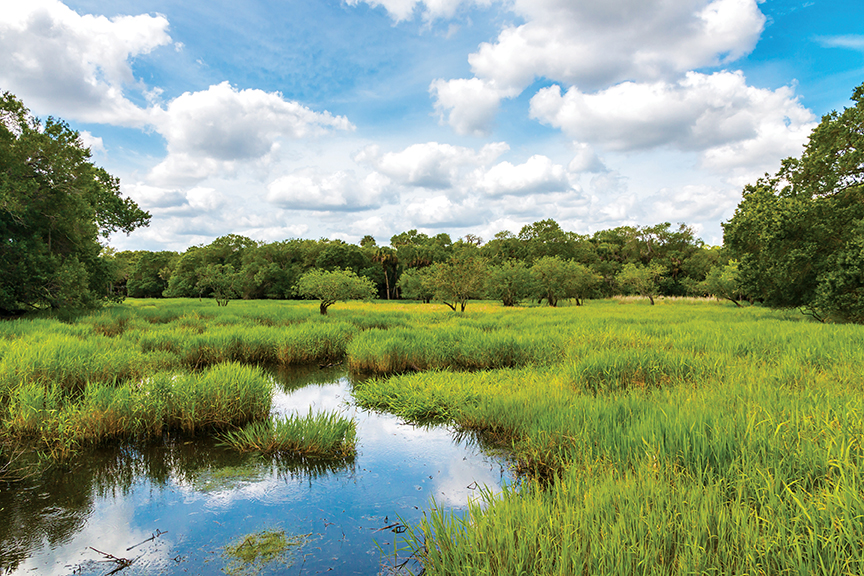
© istockphoto.com/Vogariver
He notes that the Everglades, which is the source of fresh water for more than 8 million Floridians, is critical to the state’s economy and that new legislation for protection and restoration is required. “The Everglades is the only place where crocodiles and alligators coexist,” notes the Foundation CEO, who quips, “Members of Congress could learn from that!”
The Dursts are best known for building skyscrapers — projects like One World Trade Center and One Bryant Park practically define the Manhattan skyline — but they are passionate about preserving Florida’s endangered wilderness. “We have a home in Florida and have experienced first-hand the devastation that toxic algae blooms can have, not only on our environment, but on the local economy of communities connected to the ocean or waterways,” reports Douglas Durst.
Viewing the Everglades as a canary-in-a-coal mine, Durst states, “They, unfortunately, are previewing what will befall all of our nation’s waterways if we don’t act quickly to combat this problem.” The environmentally conscious Durst adds, “We’re proud to join The Everglades Foundation in raising awareness of this vital issue and helping to tap new streams of support for their work.” Eikenberg responds, “The Durst family and Durst Organization demonstrate that development and environmental preservation are not mutually exclusive, and we were honored to be hosted by them.”


